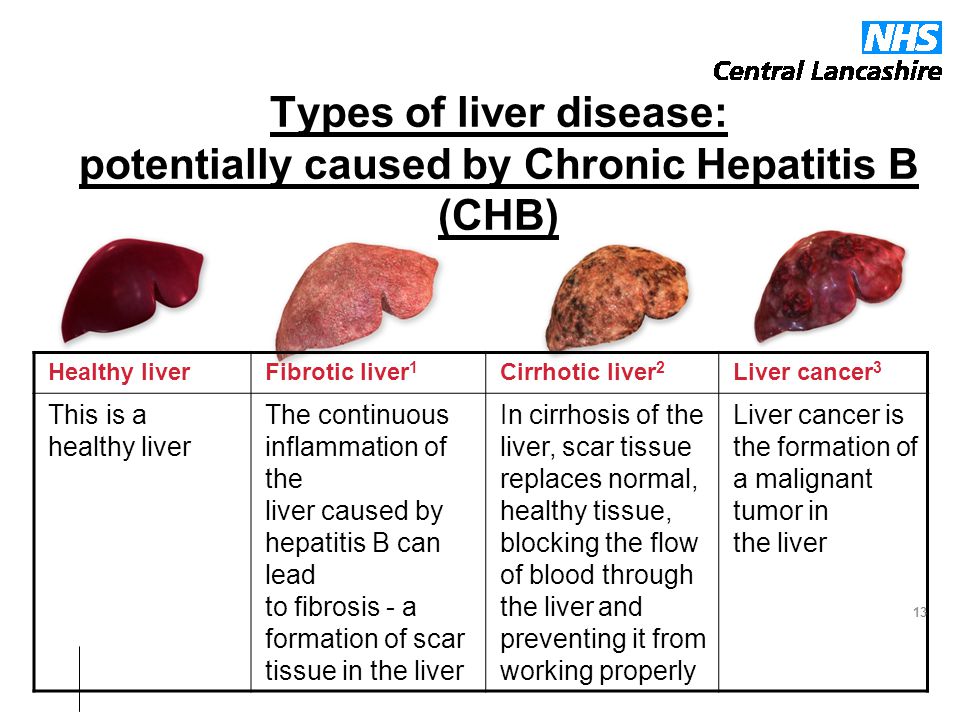Can a Cirrhotic Liver Heal: Understanding Cirrhosis Symptoms, Causes, and Treatments
What are the symptoms and causes of cirrhosis. How is cirrhosis treated. Can lifestyle changes help manage cirrhosis. What medications are used for cirrhosis. How are complications of cirrhosis managed. When is a liver transplant necessary for cirrhosis.
Understanding Cirrhosis: A Comprehensive Overview
Cirrhosis is a serious liver condition characterized by the replacement of healthy liver tissue with scar tissue. This scarring impairs the liver’s ability to function properly, leading to various complications. While cirrhosis is generally considered irreversible, early intervention and proper management can slow its progression and improve quality of life.
What causes cirrhosis?
Cirrhosis can result from various factors, including:
- Chronic alcohol abuse
- Viral hepatitis (particularly hepatitis B and C)
- Non-alcoholic fatty liver disease (NAFLD)
- Autoimmune liver diseases
- Inherited disorders (e.g., hemochromatosis, Wilson’s disease)
- Chronic biliary diseases
Identifying the underlying cause is crucial for developing an effective treatment plan and potentially slowing the progression of the disease.

Recognizing the Symptoms of Cirrhosis
Cirrhosis often develops silently, with symptoms appearing only after significant liver damage has occurred. Common symptoms include:
- Fatigue and weakness
- Loss of appetite
- Unexplained weight loss
- Nausea
- Abdominal pain or swelling
- Jaundice (yellowing of the skin and eyes)
- Itchy skin
- Easy bruising or bleeding
- Swelling in the legs and ankles (edema)
- Spider-like blood vessels on the skin
Is early detection of cirrhosis possible? Yes, regular check-ups and liver function tests can help identify liver problems before symptoms appear, allowing for earlier intervention and better management of the condition.
Lifestyle Changes: A Cornerstone of Cirrhosis Management
While cirrhosis cannot usually be cured, lifestyle modifications play a crucial role in managing symptoms and preventing further liver damage. These changes include:
Alcohol Abstinence
For individuals with alcohol-related cirrhosis, complete abstinence from alcohol is essential. Even for those with cirrhosis unrelated to alcohol, avoiding alcoholic beverages is recommended to prevent additional liver stress.

Smoking Cessation
Quitting smoking can significantly improve overall health and reduce the risk of complications associated with cirrhosis.
Weight Management
Maintaining a healthy weight through diet and exercise is crucial, especially for those with non-alcoholic fatty liver disease. Excess weight can exacerbate liver inflammation and damage.
Regular Exercise
Physical activity helps maintain muscle mass, improve overall health, and potentially slow the progression of cirrhosis. How much exercise is recommended for cirrhosis patients? While individual needs may vary, aim for at least 150 minutes of moderate-intensity aerobic activity per week, along with strength training exercises, under medical supervision.
Proper Hygiene
Good hygiene practices can reduce the risk of infections, which can be particularly dangerous for individuals with compromised liver function.
Vaccination
Staying up-to-date with recommended vaccinations, including annual flu shots and hepatitis A and B vaccines, is crucial for preventing infections that could further compromise liver health.
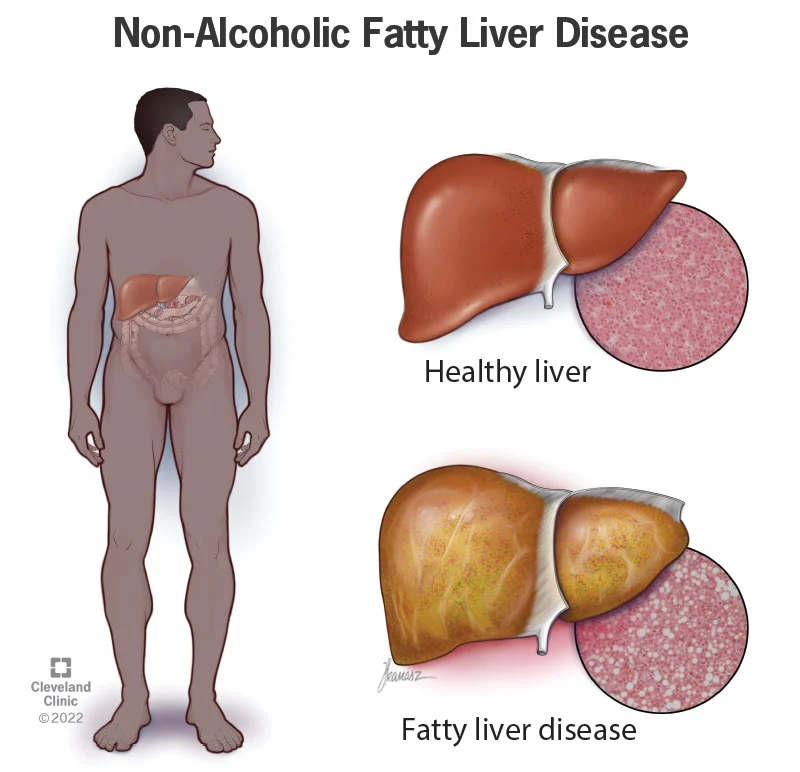
Medication Management
Consulting healthcare providers before taking any new medications, including over-the-counter drugs, is essential, as cirrhosis can affect how the body processes certain medicines.
Nutritional Considerations for Cirrhosis Patients
Proper nutrition is vital for managing cirrhosis and preventing complications. Key dietary recommendations include:
Balanced Diet
Consuming a variety of nutrient-rich foods is essential to combat malnutrition, which is common in cirrhosis patients.
Salt Reduction
Limiting salt intake can help reduce fluid retention and swelling in the legs, feet, and abdomen.
Increased Calorie and Protein Intake
Due to the liver’s reduced ability to store glycogen, cirrhosis patients may require additional calories and protein to prevent muscle loss and weakness.
Frequent, Small Meals
Eating several small meals throughout the day, rather than a few large ones, can help maintain stable energy levels and support liver function.
Can dietary changes alone reverse cirrhosis? While diet alone cannot reverse cirrhosis, proper nutrition can significantly improve liver function, reduce complications, and enhance overall quality of life for cirrhosis patients.

Medical Treatments for Cirrhosis
The specific medical treatments for cirrhosis depend on its underlying cause and the severity of liver damage. Common approaches include:
Antiviral Medications
For cirrhosis caused by viral hepatitis, antiviral drugs may be prescribed to suppress or eliminate the virus, potentially slowing disease progression.
Diuretics
These medications, combined with a low-salt diet, help reduce fluid retention and swelling associated with cirrhosis.
Beta-Blockers
Drugs like propranolol may be used to lower blood pressure in the portal vein, reducing the risk of variceal bleeding.
Lactulose and Antibiotics
These medications help manage hepatic encephalopathy by reducing toxin levels in the blood.
Prescription Creams
Topical treatments may be prescribed to alleviate skin itching, a common symptom of cirrhosis.
How effective are these treatments in managing cirrhosis? While these medications cannot cure cirrhosis, they can significantly improve symptoms, prevent complications, and enhance the quality of life for many patients.

Managing Complications of Advanced Cirrhosis
As cirrhosis progresses, various complications may arise, requiring specific interventions:
Esophageal and Gastric Varices
These swollen veins in the esophagus or stomach can cause life-threatening bleeding. Treatment options include:
- Beta-blockers to reduce blood pressure in the varices
- Endoscopic procedures to band or seal the varices
- Emergency interventions for acute bleeding episodes
Ascites and Edema
The buildup of fluid in the abdomen (ascites) or legs and ankles (edema) is managed through:
- Diuretic medications
- Salt restriction
- Paracentesis (draining fluid from the abdomen) in severe cases
Hepatic Encephalopathy
This brain dysfunction caused by liver failure is treated with:
- Lactulose syrup to help remove toxins from the body
- Antibiotics like rifaximin to prevent infections
- Dietary protein management
Increased Bleeding Risk
To manage the increased risk of bleeding due to impaired clotting factors:
- Blood products or medications may be administered before procedures
- Vitamin K supplementation might be recommended
- Careful planning is essential before any surgical or dental procedures
Can these complications be prevented entirely? While complete prevention may not always be possible, early detection and prompt treatment can significantly reduce the severity and frequency of these complications, improving patient outcomes.

Liver Transplantation: A Life-Saving Option
For patients with end-stage cirrhosis or severe complications, liver transplantation may be the only viable treatment option. This major surgical procedure involves replacing the diseased liver with a healthy organ from a donor.
Candidacy for Liver Transplant
Factors considered for transplant eligibility include:
- Severity of liver disease
- Overall health status
- Age and comorbidities
- Ability to comply with post-transplant care
- Absence of active substance abuse
The Transplant Process
Liver transplantation involves:
- Extensive evaluation and testing
- Placement on a waiting list for a donor organ
- The transplant surgery itself
- Lifelong immunosuppressive therapy to prevent organ rejection
- Regular follow-up care and monitoring
What is the success rate of liver transplants for cirrhosis patients? Liver transplantation has shown remarkable success in improving survival and quality of life for suitable candidates. Five-year survival rates after transplantation can exceed 70%, depending on various factors.

Innovative Treatments and Future Prospects
Research into cirrhosis treatment is ongoing, with several promising avenues being explored:
Antifibrotic Therapies
Medications aimed at slowing or reversing liver fibrosis are under investigation, potentially offering new hope for cirrhosis patients.
Stem Cell Therapy
Preliminary studies suggest that stem cell treatments may help regenerate liver tissue and improve liver function in some cirrhosis patients.
Artificial Liver Support Systems
These devices aim to temporarily support liver function, either as a bridge to transplantation or to allow the liver time to regenerate.
Gene Therapy
Researchers are exploring ways to correct genetic defects that contribute to certain forms of cirrhosis.
Are these new treatments widely available? Many of these innovative approaches are still in experimental stages and not yet widely available. However, they represent exciting possibilities for the future of cirrhosis treatment.
Living with Cirrhosis: Strategies for Long-Term Management
Managing cirrhosis is a long-term commitment that requires a comprehensive approach:

Regular Medical Check-ups
Frequent monitoring of liver function and overall health is crucial for early detection of complications and adjustment of treatment plans.
Medication Adherence
Strictly following prescribed medication regimens is essential for managing symptoms and preventing disease progression.
Lifestyle Maintenance
Consistently adhering to recommended lifestyle changes, including abstaining from alcohol and maintaining a healthy diet, is vital for long-term management.
Mental Health Support
Dealing with a chronic condition like cirrhosis can be emotionally challenging. Seeking psychological support or joining support groups can be beneficial.
Education and Self-Management
Staying informed about cirrhosis and actively participating in self-management strategies can improve outcomes and quality of life.
Can cirrhosis patients lead normal lives? With proper management and adherence to treatment plans, many cirrhosis patients can maintain a good quality of life and continue many of their regular activities, albeit with some modifications and precautions.
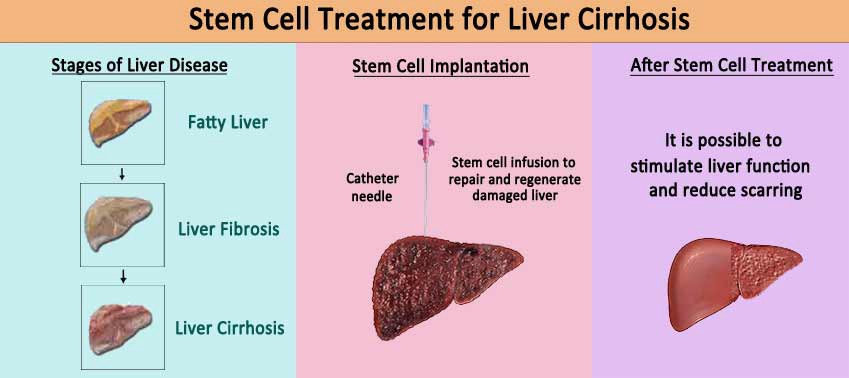
In conclusion, while cirrhosis presents significant challenges, advancements in understanding and treating the condition offer hope for improved outcomes. By combining lifestyle modifications, medical treatments, and vigilant monitoring, many patients can effectively manage their condition and maintain a good quality of life. As research continues, new therapies may emerge, potentially offering even better prospects for those affected by this complex liver disease.
Treatment for cirrhosis – NHS
The treatment for cirrhosis depends on what has caused it. Cirrhosis cannot usually be cured, but there are ways to manage the symptoms and any complications, and stop the condition getting worse.
Lifestyle changes
If you have cirrhosis, there are several lifestyle changes you can make to reduce your chances of further problems and complications. These include:
- avoid alcohol
- quit smoking
- lose weight if you’re overweight or obese
- do regular exercise to reduce muscle loss
- practise good hygiene to reduce your chance of getting infections
- speak to a GP about vaccinations you may need, such as the annual flu vaccine or travel vaccines
- speak to a GP or pharmacist if you’re taking over-the-counter or prescription medicines, because cirrhosis can affect the way some medicines work
Dietary changes
Malnutrition is common in people with cirrhosis, so it’s important you eat a healthy, balanced diet to help you get all the nutrients you need.
Cutting down on salt can help reduce the chance of swelling in your legs, feet and tummy caused by a build-up of fluid.
The damage to your liver can mean it’s unable to store glycogen, which is a type of fuel the body needs for energy.
When this happens, your muscle tissue is used for energy between meals, which leads to muscle loss and weakness. This means you may need extra calories and protein in your diet.
Eating healthy snacks between meals, or having 3 or 4 small meals each day, rather than 1 or 2 large meals, may help.
Medicine
The medicine you need will depend on what caused the damage to your liver. For example, if cirrhosis is from long-term viral hepatitis, you may be prescribed antiviral medicine.
You may be offered medicines to ease the symptoms of cirrhosis, such as:
- diuretics, which are used in combination with a low-salt diet to reduce the amount of fluid in your body, which helps with swelling (oedema)
- medicine to help with high blood pressure in the main vein that takes blood to the liver (portal hypertension)
- prescription creams to ease skin itching
Managing complications
If cirrhosis progresses and your liver is no longer able to function (decompensated cirrhosis), you may get complications that need treatment.
Swollen or bleeding veins
When cirrhosis has progressed, it can cause the veins in your food pipe (oesophagus) or stomach to become swollen. These are called oesophageal varices and gastric varices.
An endoscopy is used to diagnose oesophageal and gastric varices.
You may be given a type of medicine called a beta blocker, such as propranolol, to reduce the chance of the varices bleeding, or to help control bleeding.
If you vomit blood, or have blood in your poo, it may be because the varices are bleeding (a variceal haemorrhage). You will need urgent treatment. Go to your nearest A&E department immediately.
There are several treatments used to prevent or stop the bleeding, such as medicines and fitting a band around the veins (endoscopic variceal band ligation).
Find out more about the treatments for oesophageal and gastric varices from The British Liver Trust.
Fluid in the tummy and legs
A build-up of fluid in your tummy area (ascites) or legs and ankles (peripheral oedema) is a common complication when cirrhosis progresses.
The main treatments are cutting out salt from your diet and taking a type of medicine called a diuretic, such as spironolactone or furosemide.
If the fluid in your tummy becomes infected, you may need antibiotics. In severe cases, you may need to have the fluid drained from your tummy area with a tube.
Encephalopathy
Cirrhosis can sometimes cause problems with your brain function (encephalopathy).
Symptoms include confusion, feeling sleepy, and problems concentrating. This happens because the liver is no longer able to clear toxins properly.
The main treatment for encephalopathy is lactulose syrup. This acts as a laxative and helps clear toxins from your body. You may also need to take an antibiotic called rifaximin, to prevent infection.
This acts as a laxative and helps clear toxins from your body. You may also need to take an antibiotic called rifaximin, to prevent infection.
Bleeding
Cirrhosis can affect your liver’s ability to make your blood clot, which means there’s a chance of severe bleeding if you cut yourself or have an operation or dental work.
You may be given medicines, or a blood product called plasma, to prevent or treat bleeding.
Talk to your doctor about your condition and the risk of bleeding before having an operation, including any dental work.
Liver transplant
If cirrhosis progresses and your liver is severely damaged, a liver transplant may be the only treatment option.
This is a major operation that involves removing your diseased liver and replacing it with a healthy liver from a donor.
You will probably have to wait a long time for a suitable donor liver to become available.
You will not be able to have a liver transplant if cirrhosis was caused by alcohol-related liver disease and you continue to drink alcohol.
Find out more about a liver transplant from the British Liver Trust.
Diabetes
Diabetes may get worse if you have type 2 diabetes and develop cirrhosis.
This is because cirrhosis can increase your resistance to insulin, a hormone produced by the body to control blood sugar levels.
Managing cirrhosis and diabetes can be very challenging. You will need careful monitoring and may need to take several different medicines.
Liver cancer
Having cirrhosis increases the chance of liver cancer, most commonly a type called hepatocellular carcinoma (HCC).
Many symptoms of liver cancer are the same as symptoms of cirrhosis, so regular checks for liver cancer are important.
You should have an ultrasound scan, and may also have blood tests, every 6 months to check for HCC.
Read more about liver cancer.
Page last reviewed: 29 June 2020
Next review due: 29 June 2023
Cirrhosis of the liver – Better Health Channel
Cirrhosis of the liver is a type of liver damage where healthy cells are replaced by scar tissue. The liver is unable to perform its vital functions of metabolism, production of proteins, including blood clotting factors, and filtering of drugs and toxins.
Many people think that only drinking excessive amounts of alcohol causes liver cirrhosis. But there are a number of other ways that the liver can be damaged and lead to cirrhosis.
Depending on the cause, cirrhosis can develop over months or years.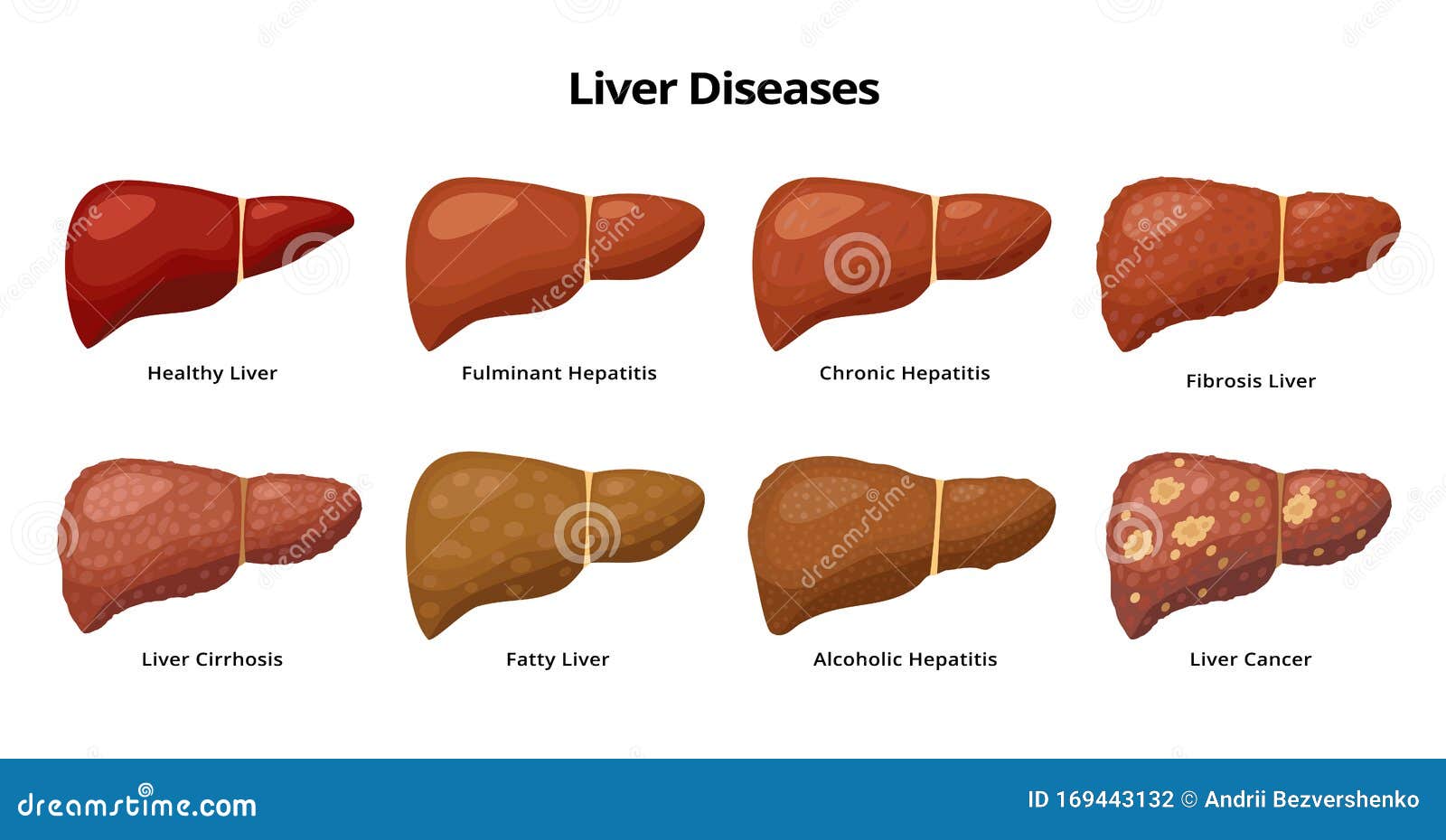 There is no cure. Treatment aims to halt liver damage, manage the symptoms and reduce the risk of complications, such as diabetes, osteoporosis (brittle bones), liver cancer and liver failure.
There is no cure. Treatment aims to halt liver damage, manage the symptoms and reduce the risk of complications, such as diabetes, osteoporosis (brittle bones), liver cancer and liver failure.
Symptoms of liver cirrhosis
Symptoms depend on the severity of the cirrhosis, but may include:
- appetite loss
- nausea
- weight loss
- general tiredness
- spidery red veins on the skin (spider angiomas)
- easily bruised skin
- yellowing of the skin and eyes (jaundice)
- reddened palms (palmar erythema)
- itchy skin
- hair loss
- dark coloured urine
- fluid retention in the abdomen and legs
- internal bleeding presenting as dark-coloured stools or vomiting blood
- hormone disruptions that could cause a range of problems, including testicular atrophy (shrinking) and impotence in males or amenorrhoea (no periods) in women
- disturbed sleep patterns
- cognitive problems such as memory loss, confusion or concentration difficulties.

Causes of liver cirrhosis
Two of the most well-known causes of liver cirrhosis are long-term excessive alcohol consumption and hepatitis C virus infection. However, there are a number of other conditions that can also lead to liver damage and cirrhosis. In fact, non-alcoholic fatty liver disease (‘fatty liver’) is the most common cause of chronic liver disease in Australia. A small proportion of patients with fatty liver can also develop cirrhosis. Hepatitis B virus infection is an important cause of cirrhosis worldwide.
Alcoholic liver cirrhosis
Excessive and chronic alcohol consumption is the most common cause of liver cirrhosis. Cirrhosis from drinking alcohol can develop over many years.
It is important to remember that the amount of alcohol that will damage the liver can vary from person to person. If a healthy woman drinks the same amount of alcohol as a healthy man, she has a higher risk of cirrhosis. Children are particularly susceptible to damage from alcohol. Some people also have a genetic predisposition to alcohol-related liver injury.
Some people also have a genetic predisposition to alcohol-related liver injury.
People with a medical condition, especially those affecting the liver, may have a higher risk of damage from alcohol. If you already have hepatitis B or C, or cirrhosis of the liver (from any cause), you are at risk of making your condition worse if you drink alcohol.
Liver cirrhosis and hepatitis
Hepatitis is a general term meaning inflammation of the liver. Viral hepatitis is hepatitis caused by a virus like the hepatitis B or C virus. Chronic hepatitis C is a common cause of liver cirrhosis. Hepatitis B can also cause cirrhosis. With either of these conditions, you increase your risk of developing cirrhosis if you drink alcohol.
Liver cirrhosis and fatty liver
Non-alcoholic fatty liver disease (NAFLD) is a condition where fat accumulates in the liver. It now affects about 20 per cent of Australians. It is becoming more common in children who are overweight or obese.
NAFLD is associated with conditions such as:
- obesity – 20 per cent of people with obesity have fatty liver disease
- high blood cholesterol and triglycerides
- type 2 diabetes.

NAFLD can lead to inflammation of the liver and the formation of scar tissue, a condition called non-alcoholic steatohepatitis (NASH), which can then lead to cirrhosis of the liver. NASH usually occurs in people who are obese, have diabetes or have high blood cholesterol and triglycerides, so controlling these conditions is recommended.
People with NASH have a higher risk of liver damage if they have hepatitis C. The effect of alcohol is debated, but it is probably not recommended if there is significant liver scarring present.
Liver cirrhosis from inherited conditions
Some inherited conditions damage the liver and this leads to the scarring that can contribute to cirrhosis. These conditions include:
- haemochromatosis – the body accumulates iron, which can damage many organs, including the liver
- Wilson disease – the tissues of the body accumulate copper
- galactosaemia – the body is unable to process galactose (a sugar) so it accumulates in the blood and can result in liver damage
- cystic fibrosis – mainly affects the lungs, but can also cause scarring of the liver
- alpha-1 antitrypsin deficiency – can cause lung damage but can also affect liver function and lead to cirrhosis and liver failure.

Other causes of liver cirrhosis
A number of other medical conditions that result in liver damage can cause cirrhosis, including:
- some autoimmune diseases – certain types of cells of the immune system attack and damage the liver. These uncommon conditions that can cause liver cirrhosis include autoimmune hepatitis, primary biliary cholangitis and primary sclerosing cholangitis (inflammation and scarring of the bile ducts).
- exposure to poisons – can damage the liver because one of the liver’s main roles is to remove toxins from the blood. Prolonged exposure to environmental toxins such as arsenic can damage the liver and lead to cirrhosis.
- schistosomiasis – a tropical disease caused by a parasitic worm called Schistosoma. The worm is passed to humans from snails, and the disease is also known as bilharziasis. Chronic schistosomiasis causes damage to internal organs including the liver
- certain medications (such as amiodarone, which is used to manage heart arrhythmias) – in rare cases, may cause cirrhosis in susceptible people
- unknown conditions – can cause cirrhosis in about one third of cases (called ‘cryptogenic cirrhosis’.
 Some of these are due to non-alcoholic fatty liver disease).
Some of these are due to non-alcoholic fatty liver disease).
Complications of liver cirrhosis
Without medical treatment, cirrhosis of the liver can lead to a range of potentially life-threatening complications including:
- bleeding from enlarged blood vessels (‘varices’) in the oesophagus or stomach
- build-up of fluid within the abdominal cavity (ascites)
- infection of the fluid found within the abdominal cavity (spontaneous bacterial peritonitis)
- liver failure – loss of liver cells and disruption of blood flow through the liver by scar tissue can impair liver function
- impaired functioning of the brain caused by toxins that the liver has failed to remove (hepatic encephalopathy).
- primary liver cancer – the most common type of cancer caused by cirrhosis is hepatocellular carcinoma
- osteoporosis (brittle bones)
Diagnosis of liver cirrhosis
Tests used to diagnose liver cirrhosis may include:
- medical history
- physical examination
- blood tests, including liver function tests
- urine tests
- imaging studies, including ultrasound, computed tomography (CT scan) or magnetic resonance imaging (MRI)
- transient elastography (FibroscanTM), this test uses an ultrasound-based technique to detect liver cirrhosis.
 This test is less accurate in people with obesity issues unless specially designed XL probes are used.
This test is less accurate in people with obesity issues unless specially designed XL probes are used. - liver biopsy, obtaining liver tissue for laboratory examination.
Treatment of liver cirrhosis
Cirrhosis of the liver is incurable but, in some cases, treatment can help to reduce the likelihood that the condition will become worse.
Treatment options include:
- treating the underlying cause of liver damage – for example, treating the underlying hepatitis (B or C) virus infection, or the removal of blood to lower iron levels in haemochromatosis
- making dietary and lifestyle changes – a nutritious low-fat, high-protein diet and exercise can help people to avoid malnutrition
- avoiding alcohol – alcohol damages the liver and harms remaining healthy tissue
- taking certain medications – such as beta-blockers to reduce blood pressure and lower the risk of bleeding or diuretics to remove excess fluid
- avoiding certain medications that can make the symptoms worse – such as non-steroidal anti-inflammatory drugs (NSAIDs), opiates or sedatives
- having regular medical check-ups – including scans to check for liver cancer
- having regular endoscopic procedures to check whether there are varicose veins within the oesophagus or stomach
- having a liver transplant – an option that may be considered in severe cases.

Where to get help
- Your GP (doctor)
- Gastroenterologist
- Dietitian
Cirrhosis of the liver: symptoms, diagnosis and treatment
Content
- 1 Cirrhosis of the liver: symptoms, diagnosis and treatment
- 1.1 Cirrhosis of the liver: symptoms, diagnosis and treatment
- 1.1.1 Symptoms of cirrhosis of the liver
- 1.1.3 Treatment of liver cirrhosis
900 05 1.1.2 Diagnosis of cirrhosis liver
- 1.2 Liver cirrhosis: symptoms, diagnosis and treatment
- 1.2.1 What is liver cirrhosis?
- 1.3 What are the signs of liver cirrhosis?
- 1.4 Risk factors for liver cirrhosis
- 1.5 Diagnosis of liver cirrhosis
- 1.5.1 History
- 1.5.2 Clinical and laboratory investigations
- 1.5.3 Instrumental examinations
- 1.6 What are the treatments for liver cirrhosis
- 1.7 Cirrhosis diet plan
- 1.
 7.1 What to eat
7.1 What to eat - 1.7.2 What to limit or avoid
- 1.
- 1.8 Preventing cirrhosis
- 1.9 How to prevent progression of liver cirrhosis
- 1.10 Life after beating cirrhosis
- 1.11 Can cirrhosis be cured?
- 1.12 Related videos:
- 1.13 Q&A:
- 1.13.0.1
- 1.13.0.2
- 1.13.0.3 treat cirrhosis of the liver?
- 1.13.0.4
- 1.13.0.5
- 1.13.0.6 diagnosis of liver cirrhosis. Find out how to recognize this dangerous disease and what treatments to use.
Cirrhosis of the liver is a chronic liver disease that develops gradually and can lead to complete damage to the liver, deterioration of quality of life and, ultimately, death. Symptoms of cirrhosis of the liver may manifest differently in each patient, but in the early stages of the disease they are not always noticeable and can take the form of fatigue, pain in the right hypochondrium, heartburn, etc.
However, when the first manifestations of the disease appear, it is important to seek immediate medical attention.
 Doctors use various methods to diagnose cirrhosis of the liver, such as a physical examination, measurement of enzyme levels in the blood, ultrasound, and so on.
Doctors use various methods to diagnose cirrhosis of the liver, such as a physical examination, measurement of enzyme levels in the blood, ultrasound, and so on.Treatment of cirrhosis of the liver should be started as early as possible to prevent its development and keep the patient healthy. There are various treatments for cirrhosis of the liver, such as lifestyle changes, medications, procedures, and surgeries. When determining the optimal treatment for each patient, doctors consider the stage of the disease and other factors.
Although cirrhosis of the liver is a serious disease that often leads to complications, it is important to remember that early medical attention and proper treatment can prevent its development and allow you to return to a healthy lifestyle.
Cirrhosis of the liver: symptoms, diagnosis and treatment
Symptoms of cirrhosis of the liver
Cirrhosis of the liver is a chronic disease that leads to a gradual deterioration of liver function.
 Among the main symptoms of liver cirrhosis are:
Among the main symptoms of liver cirrhosis are:- An increase in the size of the abdomen and the appearance of the ability to tumour;
- Yellowing of the skin and whites of the eyes;
- Fatigue and weakness;
- Decreased appetite and weight loss;
- Abdominal pain and heartburn;
- Increased bleeding and bruising.
These symptoms may appear gradually, so early medical attention is very important for the successful treatment of cirrhosis.
Diagnosis of cirrhosis of the liver
Diagnosis of cirrhosis of the liver may require complex medical examinations. The main research methods used to diagnose liver cirrhosis are:
- Blood test for disease markers;
- Ultrasound of the liver and biliary tract;
- CT or MRI of the liver and abdomen;
- Fibrogastroduodenoscopy;
- Liver laparoscopy.
These methods allow you to accurately establish the diagnosis, determine the stage of the disease and determine the possibility of surgery or treatment.

Treatment of liver cirrhosis
Treatment of liver cirrhosis is aimed at maintaining liver function at an optimal level, and at eliminating or alleviating the symptoms of the disease. The optimal way to treat cirrhosis of the liver is determined after diagnosis and evaluation of the patient’s condition. Depending on the degree of development of the disease, the patient may be prescribed conservative treatment or surgery.
Treatment should include changes in diet and diet, treatment of comorbidities, and the use of special medications to protect liver function. If possible, liver transplantation can be performed – this is the only radical way to treat cirrhosis of the liver.
Cirrhosis of the liver: symptoms, diagnosis and treatment
What is cirrhosis of the liver?
Cirrhosis of the liver is a chronic disease in which the liver tissues are gradually destroyed and replaced by scar tissue, which leads to a violation of its functions.
The causes of liver cirrhosis can be alcohol and drug poisoning, heredity, hepatitis viruses, etc.
 The presence of the disease can be determined using medical studies such as ultrasound, biopsy and other methods, which allows you to start treatment at an early stage and prevent possible complications.
The presence of the disease can be determined using medical studies such as ultrasound, biopsy and other methods, which allows you to start treatment at an early stage and prevent possible complications.What signs indicate the presence of cirrhosis of the liver?
Liver cirrhosis is a chronic liver disease characterized by impaired functioning of the liver. One of the main signs of cirrhosis is jaundice, which manifests itself externally – it will let you know about itself when the level of bilirubin in the blood reaches noticeable values.
Often the first symptom of liver cirrhosis is pain in the right hypochondrium, which is especially aggravated after eating fatty foods or alcohol. Various disorders of vital organs may also occur, for example, dizziness, shortness of breath, heart palpitations, joint pain.
Cirrhosis of the liver can lead to dysfunction of the digestive system: it becomes difficult for the patient to tolerate fatty, fried, spicy and salty foods, swelling of the legs and abdomen is formed.
 In some cases, it is possible to increase body temperature to critical values.
In some cases, it is possible to increase body temperature to critical values.- Chronic fatigue – with cirrhosis, a person always feels tired, which does not go away even after a long rest.
- Discoloration of the skin – with cirrhosis, the skin becomes yellow or brownish-gray. It is also common for skin spots to appear, and nails and bones to become more brittle.
- Fainting and dizziness – the brain is often affected by liver cirrhosis, which can lead to confusion, loss of consciousness or falling.
Risk factors for cirrhosis of the liver
Cirrhosis of the liver is a serious disease that can lead to impaired liver function and even death. There are a number of risk factors that can contribute to the onset of cirrhosis of the liver.
- Alcohol dependence: Excessive alcohol consumption is one of the most common causes of liver cirrhosis. The more alcohol a person consumes, the greater the risk of cirrhosis.

- Viral infections: Viral infections such as hepatitis B, C and D can cause cirrhosis of the liver. They are transmitted through blood or sexual contact.
- Fatty liver: Excessive accumulation of fat in the liver can lead to major problems, including cirrhosis. Fatty liver disease occurs with diabetes and overweight.
- Autoimmune diseases: Autoimmune diseases such as primary biliary cirrhosis and primary sclerosing cholangitis can also lead to liver cirrhosis.
These risk factors are just some of the possible causes of liver cirrhosis. They get worse when combined with other factors such as genetic factors, stress, and certain medications.
Diagnosis of liver cirrhosis
Anamnesis
The first step in the diagnosis of liver cirrhosis is the history taking. The doctor asks the patient questions about the presence of symptoms, such as pain in the right side, fatigue, jaundice.
 It is also worth asking about the patient’s medical history, including past surgeries and liver disease.
It is also worth asking about the patient’s medical history, including past surgeries and liver disease.Clinical and laboratory investigations
When diagnosing cirrhosis of the liver, the doctor performs a physical examination, during which symptoms associated with liver disease are detected, such as an enlarged liver and spleen, and the presence of varicose veins in the abdomen. It is also necessary to undergo laboratory tests that allow you to determine the biochemical composition of the blood, the content of proteins and other substances that may indicate the presence of cirrhosis of the liver.
Instrumental research
To clarify the diagnosis of liver cirrhosis, it is necessary to conduct instrumental studies. These can be various types of scans, such as MRI and CT scans, or analysis of a liver biopsy. These methods allow you to see changes in liver tissue and accurately establish the diagnosis of cirrhosis of the liver.
It is important to be diagnosed with liver cirrhosis at an early stage of the disease, as this allows you to start effective and timely treatment and avoid complications.

What are the treatments for liver cirrhosis
Treatment of liver cirrhosis depends on the stage of the disease and its causes.
In the early stages of liver cirrhosis, lifestyle changes may help. It is recommended to stop drinking alcohol and nicotine, to eat a diet rich in proteins, carbohydrates and vitamins, and to undergo regular medical examinations. In some cases, antiviral drugs may be used to treat viral hepatitis.
In severe cases of liver cirrhosis, liver transplantation may be necessary. Liver transplantation is the only effective treatment for end-stage cirrhosis and can completely cure the disease. However, transplantation requires the presence of a donor liver and highly qualified surgeons, which can significantly limit the possibilities of treatment.
Diet plan for liver cirrhosis
In liver cirrhosis, the main goal of nutrition is to reduce the load on the organ, reduce the accumulation of toxins and maintain a normal body weight.
 Frequent meals (5-6 times a day) in small portions are recommended.
Frequent meals (5-6 times a day) in small portions are recommended.What to eat
- Protein: lean meat, fish, eggs, low fat dairy products.
- Carbohydrates: rice, porridge, wheat, couscous, vegetables, fruit, whole grain bread.
- Fats: vegetable oils, nuts, seeds.
What to limit or eliminate
- Animal fats: fatty meat, butter.
- Sugar and sweets: sugar, sweets, cakes, pastries.
- Salt: limit the amount of salt in food.
- Alcohol: Completely eliminate alcohol from the diet.
Nutrition for cirrhosis of the liver must be made individually, taking into account the degree of progression of the disease and the patient’s condition. If you’re not sure which diet to choose, talk to your doctor or an experienced dietitian.
Prevention of cirrhosis of the liver
Prevention of cirrhosis of the liver requires proper nutrition and a healthy lifestyle.
 The first priority is to prevent the development of liver diseases.
The first priority is to prevent the development of liver diseases.Stopping smoking and drinking alcohol, as well as the correct daily routine and sufficient rest, increase immunity, which helps the body cope with stress and diseases, including cirrhosis of the liver.
- In addition, it is important to monitor metabolism and keep blood sugar levels normal. You can go in for sports and physical exercises, which increases the stability of the whole organism and helps to maintain a normal metabolism.
- Regular medical examination and treatment of diseases in the initial stages also reduces the risk of developing cirrhosis of the liver. If you have a hereditary predisposition or you suffer from chronic diseases, you should definitely visit a gastroenterologist and a neurologist.
- Knowing about liver cirrhosis and its prevention helps to stay healthy. Special programs for the prevention of liver diseases have been developed, which are carried out in medical institutions.
 Such events provide an opportunity to receive up-to-date information and practical recommendations from professionals.
Such events provide an opportunity to receive up-to-date information and practical recommendations from professionals.
Remember, in order to prevent liver cirrhosis, you need to pay attention to your diet, give up bad habits, exercise regularly, monitor your metabolism and regularly undergo medical examinations.
How to prevent the progression of liver cirrhosis
Proper nutrition. Animal fats, salt, alcohol, heavy and fatty proteins should be monitored. The diet should include more vegetables, fruits, greens, whole grains, plant-based proteins and dairy products.
Stop smoking. Nicotine enhances liver cell destruction and supports inflammation. Therefore, to slow down the progression of liver cirrhosis, you need to reduce the amount of toxins that enter the body and forget about smoking.
Treatment of the underlying disease. Liver cirrhosis most often occurs in association with other liver diseases, such as viral hepatitis.
 Correct and timely treatment of the underlying disease is one of the important points in the process of slowing down the progression of liver cirrhosis.
Correct and timely treatment of the underlying disease is one of the important points in the process of slowing down the progression of liver cirrhosis.Regular medical check-up. It is important to have regular check-ups and follow-up with a doctor to detect dangerous changes during their initial stage. Early detection of cirrhosis of the liver increases the chances of a full recovery and reduces the risk of possible complications.
Avoid exposure to toxins. It is difficult to avoid exposure to toxic substances in our lives, but steps can be taken to reduce the exposure of the liver to toxins, such as using protective equipment when exposed to chemicals.
Life after the victory over cirrhosis of the liver
Cirrhosis of the liver is a serious disease that requires decisive and comprehensive treatment. However, even after the development of the disease has been stopped, the patient will have to change his life in order to maintain health and quality of life.

One of the key points after the treatment of liver cirrhosis is nutrition. Patients are advised to follow a diet that excludes fatty, fried, canned, and smoked foods. It is important to include fresh vegetables and fruits, protein foods, cereals on the water, low-fat cheeses and dairy products in the diet.
Physical activity is also an important part of recovery from liver cirrhosis. Of course, it is necessary to consult with specialists and set the optimal load level depending on the state of health and the nature of the disease.
Regular medical examinations are an integral part of the patient’s life after the victory over cirrhosis. Experts recommend regular consultations with a gastroenterologist, ultrasound and MRI to monitor the condition of the liver and evaluate the effectiveness of treatment.
Despite the significant support of friends and relatives, psychological help may also be needed by the patient after the victory over cirrhosis of the liver.
 The treatment of this disease can be difficult, and the experiences and stress that arose during the illness can affect the patient’s emotional state. Feel free to contact a specialist.
The treatment of this disease can be difficult, and the experiences and stress that arose during the illness can affect the patient’s emotional state. Feel free to contact a specialist.Having coped with difficulties and not stopping there, the patient, after defeating liver cirrhosis, can continue an active and eventful life.
Can cirrhosis of the liver be cured?
Cirrhosis of the liver is a chronic disease that develops gradually, leading to irreversible changes in the liver tissue. Unfortunately, at the moment there is no direct method for the treatment of liver cirrhosis, which would guarantee the full restoration of the health of the organ.
To determine the complex of treatment, it is necessary to conduct a comprehensive diagnosis and assess the degree of liver damage. Therapy may include medication, diet, management of complications, and management of causes that cause cirrhosis, such as alcoholism and viral infections.
An important criterion for the success of treatment is the degree of decrease in the activity of the process and the possibility of maintaining the functionality of the liver.
 After the course of treatment, it is desirable to lead a healthy lifestyle, preventing new damage and complications of the disease.
After the course of treatment, it is desirable to lead a healthy lifestyle, preventing new damage and complications of the disease.- Regular medical examinations
- Quitting alcohol and nicotine
- Proper nutrition and physical activity
Disease activity may decrease to a complete cessation, but this requires patient discipline and medical supervision. Therefore, when confirming the diagnosis of liver cirrhosis, at any of its stages, it is necessary to seek help from specialist doctors and strictly follow their recommendations.
Related videos:
Q&A:
Can cirrhosis of the liver be completely cured?
Cirrhosis of the liver is an irreversible disease and cannot be completely cured.
 However, with timely access to a doctor and compliance with certain rules, it is possible to slow down the progression of the disease and minimize its negative consequences. In some cases, liver transplantation may be recommended, which can improve quality of life and prolong life.
However, with timely access to a doctor and compliance with certain rules, it is possible to slow down the progression of the disease and minimize its negative consequences. In some cases, liver transplantation may be recommended, which can improve quality of life and prolong life.Liver cirrhosis due to viral hepatitis is reversible. Treatment of cirrhosis in hepatitis B and C
Gepatit.ru
Specialized Scientific Hepatology Center
Academicians of the Russian Academy of Medical Sciences
V.I. Pokrovsky and Yu.M. LopukhinPark Kultury
How to get there in 30 secondsMoscow, Zubovsky boulevard, 13
+7 (495) 255-10-60
PRE-BOOKING
DAILY: 9:00-21:00In 23 years, 33084 patients have been successfully treated.
New drugs give a guarantee of up to 99%!
DISCOUNT 10% for ANALYSIS until the end of July!
- Home
- You found out about viral hepatitis too late
Early stages of cirrhosis CAN BE TREATED.
 Reverse development of cirrhosis is possible!!!.
Reverse development of cirrhosis is possible!!!.Formation of cirrhosis of the liver
– This is a long process during which the destruction of the liver occurs and the replacement of normal healthy liver tissue with connective tissue or adipose tissue, depending on the cause of liver damage.In viral hepatitis and alcoholic cirrhosis, it is a connective tissue, the density of which is much higher than the density of normal healthy hepatic parenchyma. As a result, the structure of the liver changes, its functionality is impaired, blood circulation in the abdominal cavity suffers catastrophically. Due to the increase in pressure in the main vessels of the liver, they expand and eventually rupture with subsequent internal bleeding.
If the cause of cirrhosis is fatty hepatosis, then the same changes are caused by the replacement of liver tissue with fatty tissue.
If viruses are the cause of cirrhosis, then the only way to stop the process, which has not yet reached irreversible stages, is antiviral treatment.
 Antiviral drugs have antifibrotic and anticirrhotic effects. Prescribing antiviral therapy in such cases is a serious and responsible decision for a doctor, since treatment with these drugs is often accompanied by side effects with quite dangerous blood changes. However, there are NO other ways to survive.
Antiviral drugs have antifibrotic and anticirrhotic effects. Prescribing antiviral therapy in such cases is a serious and responsible decision for a doctor, since treatment with these drugs is often accompanied by side effects with quite dangerous blood changes. However, there are NO other ways to survive.Our doctors have treated a lot of patients with cirrhosis. We have helped many of them. Many patients with the initial stage of cirrhosis, after treatment, are absolutely healthy and have a degree of fibrosis F0!! This is not an easy path. Sometimes two or more courses of antiviral therapy, non-standard solutions, joint efforts of the doctor and the patient made it possible to cope with a serious illness. Unfortunately, this does not always happen.
For the treatment of liver cirrhosis against the background of fatty hepatosis, an endocrinologist is necessarily involved in the treatment, since the cause of liver disorders in this case is hormonal and metabolic changes that can be treated in almost 100% of cases, but with the obligatory implementation by patients of the endocrinologist’s recommendations for changing lifestyle, including including nutrition and physical activity.

You can immediately make an appointment with a hepatologist
for a paid consultation by phone +7 495 255 10 60, but if you have not undergone an examination to clarify the stage of cirrhosis, sign up for a free consultation to schedule such an examination.Hepatologist’s consultation
until 08 July free of chargeWhat is important to know
- What is hepatitis B
- Hepatitis B treatment
- What is Hepatitis C
- Hepatitis C treatment
- Treatment of hepatitis C with new drugs
- alcoholic liver disease
- Fatty hepatosis
- Cirrhosis of the liver
- What is liver elastometry (fibroscan)
- Analyzes and examinations
Do you have a reason to see a hepatologist?
1) Do you have heaviness in your right side?
yes no
2) Have you visited a dentist in the last 5 years?
yes no
3) Have you had surgery or tattoos?
yes no
4) Do you often feel tired?
yes no
5) Is your waist larger than 90 cm?
yes noPatient reviews View all reviews
Gratitude from Channel One for help in preparation and participation in the program “Male and Female”
hepatology center in Moscow —
“HEPATIT.
- 1.1 Cirrhosis of the liver: symptoms, diagnosis and treatment


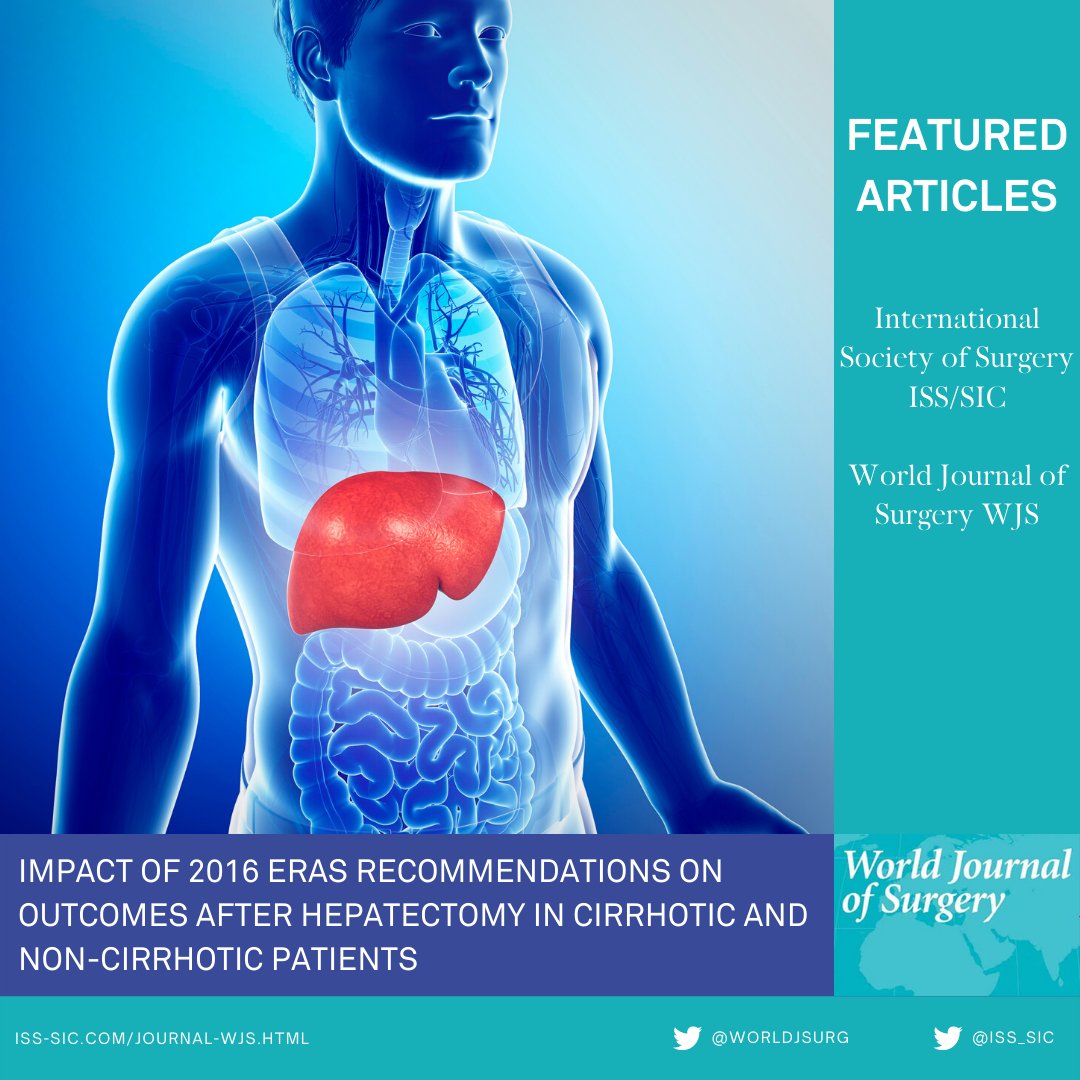

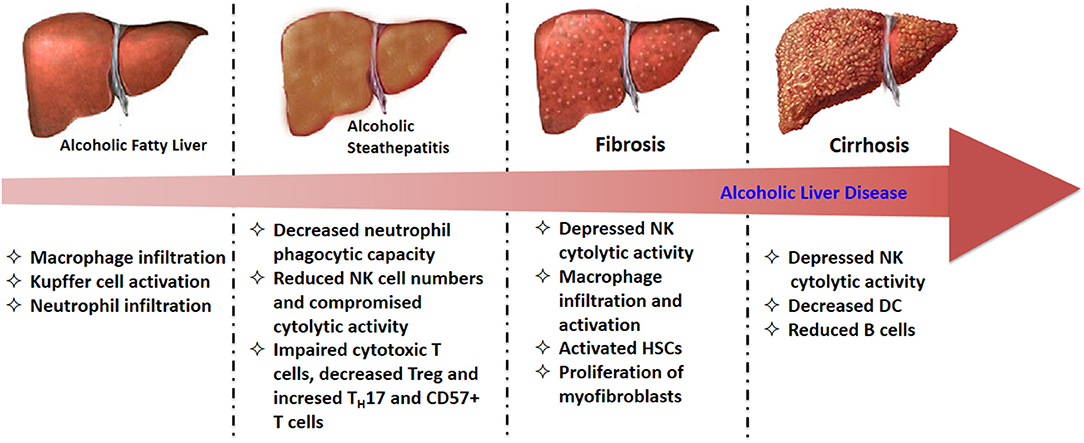 Some of these are due to non-alcoholic fatty liver disease).
Some of these are due to non-alcoholic fatty liver disease). This test is less accurate in people with obesity issues unless specially designed XL probes are used.
This test is less accurate in people with obesity issues unless specially designed XL probes are used.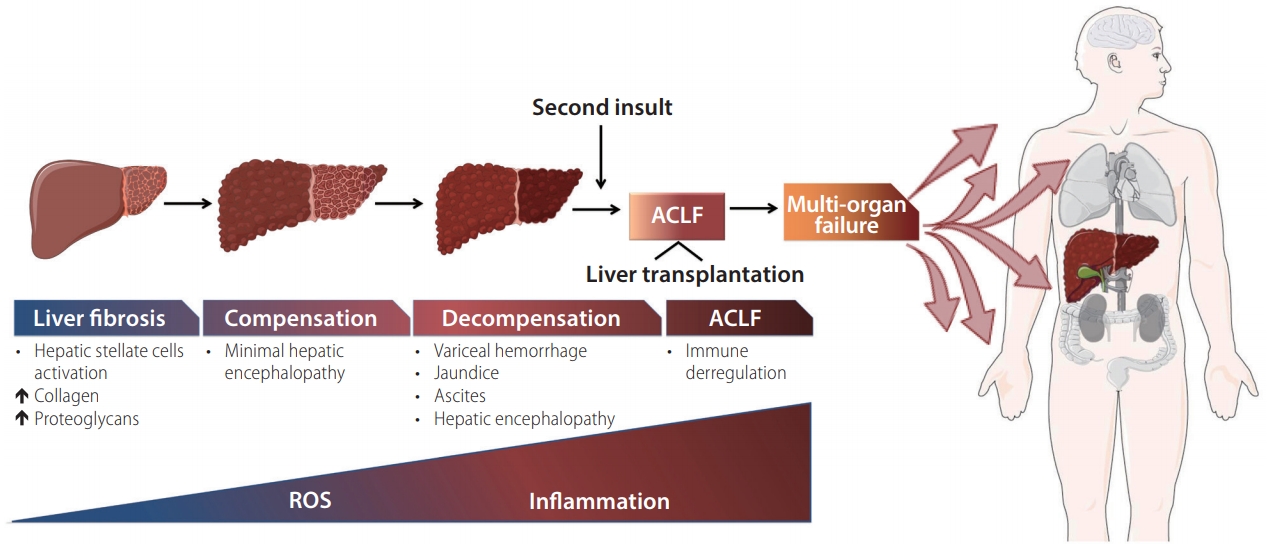
 7.1 What to eat
7.1 What to eat Doctors use various methods to diagnose cirrhosis of the liver, such as a physical examination, measurement of enzyme levels in the blood, ultrasound, and so on.
Doctors use various methods to diagnose cirrhosis of the liver, such as a physical examination, measurement of enzyme levels in the blood, ultrasound, and so on.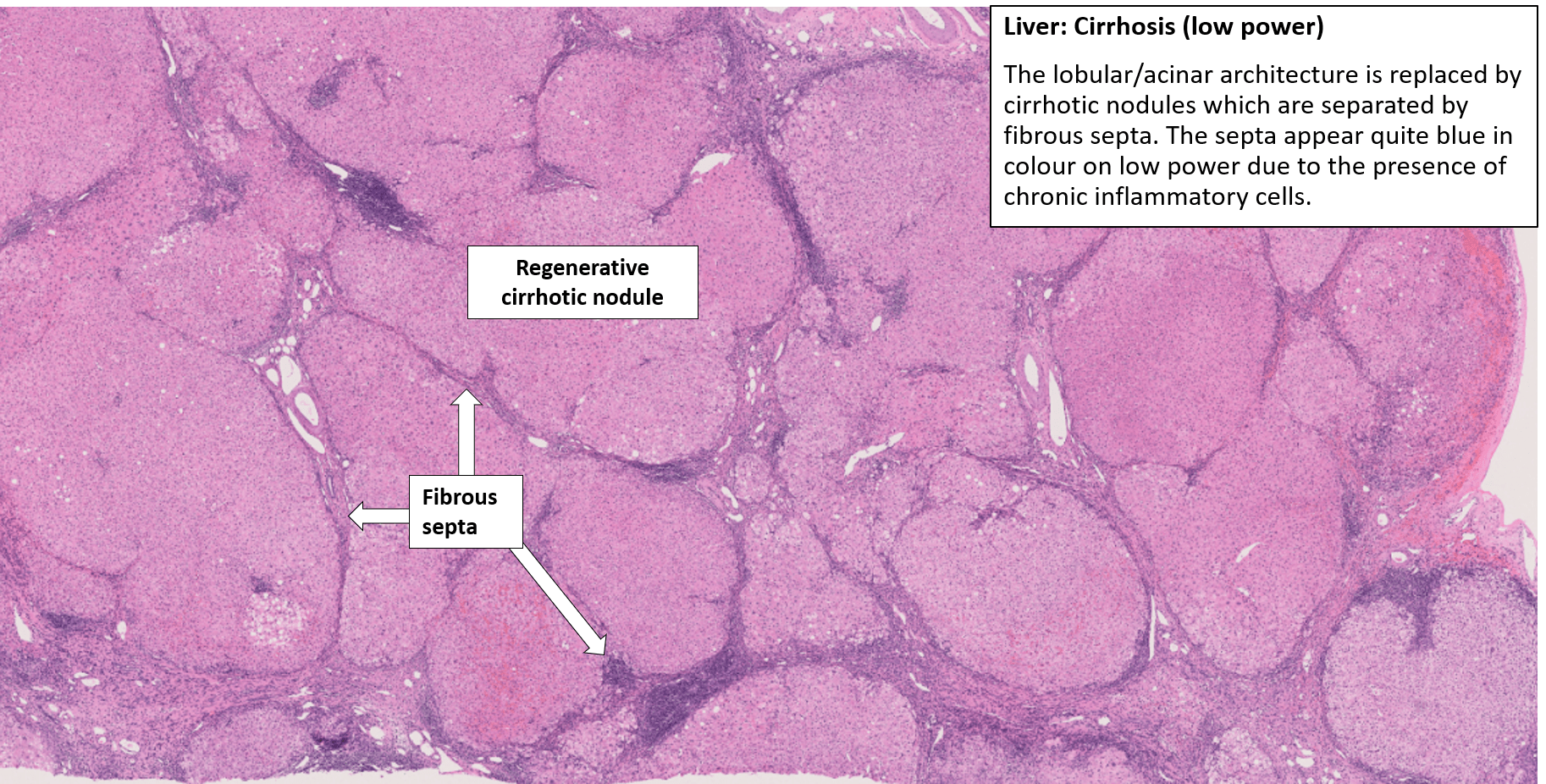 Among the main symptoms of liver cirrhosis are:
Among the main symptoms of liver cirrhosis are:
 The presence of the disease can be determined using medical studies such as ultrasound, biopsy and other methods, which allows you to start treatment at an early stage and prevent possible complications.
The presence of the disease can be determined using medical studies such as ultrasound, biopsy and other methods, which allows you to start treatment at an early stage and prevent possible complications. In some cases, it is possible to increase body temperature to critical values.
In some cases, it is possible to increase body temperature to critical values.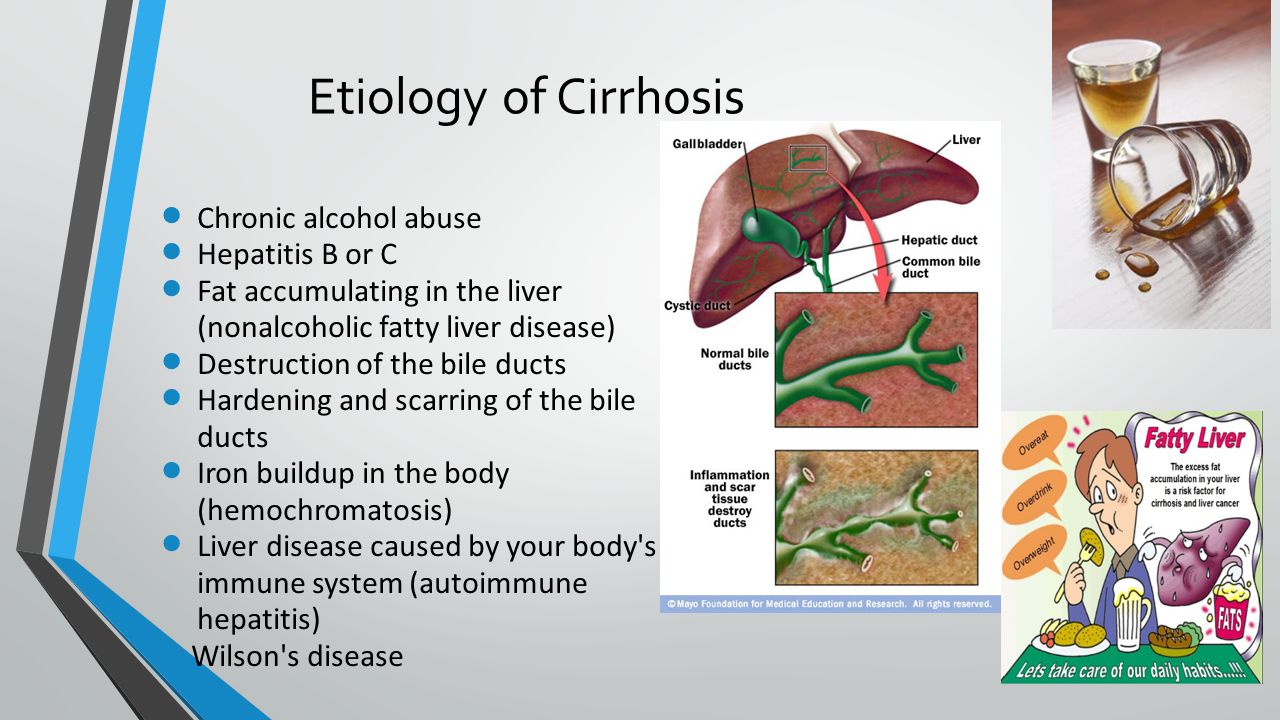
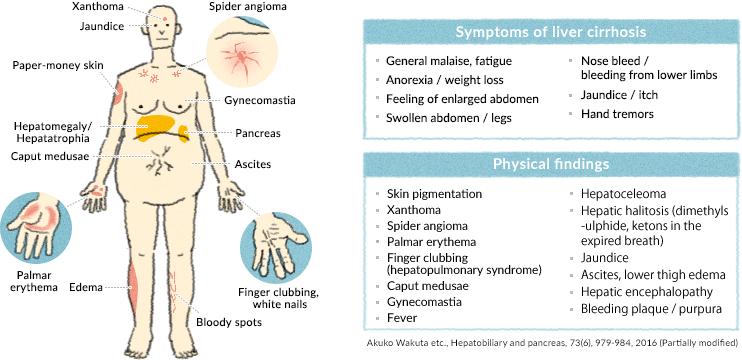 It is also worth asking about the patient’s medical history, including past surgeries and liver disease.
It is also worth asking about the patient’s medical history, including past surgeries and liver disease.
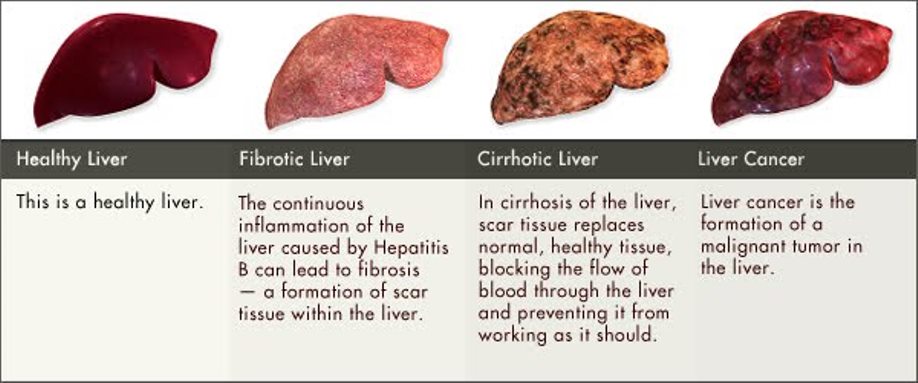 Frequent meals (5-6 times a day) in small portions are recommended.
Frequent meals (5-6 times a day) in small portions are recommended. The first priority is to prevent the development of liver diseases.
The first priority is to prevent the development of liver diseases. Such events provide an opportunity to receive up-to-date information and practical recommendations from professionals.
Such events provide an opportunity to receive up-to-date information and practical recommendations from professionals. Correct and timely treatment of the underlying disease is one of the important points in the process of slowing down the progression of liver cirrhosis.
Correct and timely treatment of the underlying disease is one of the important points in the process of slowing down the progression of liver cirrhosis.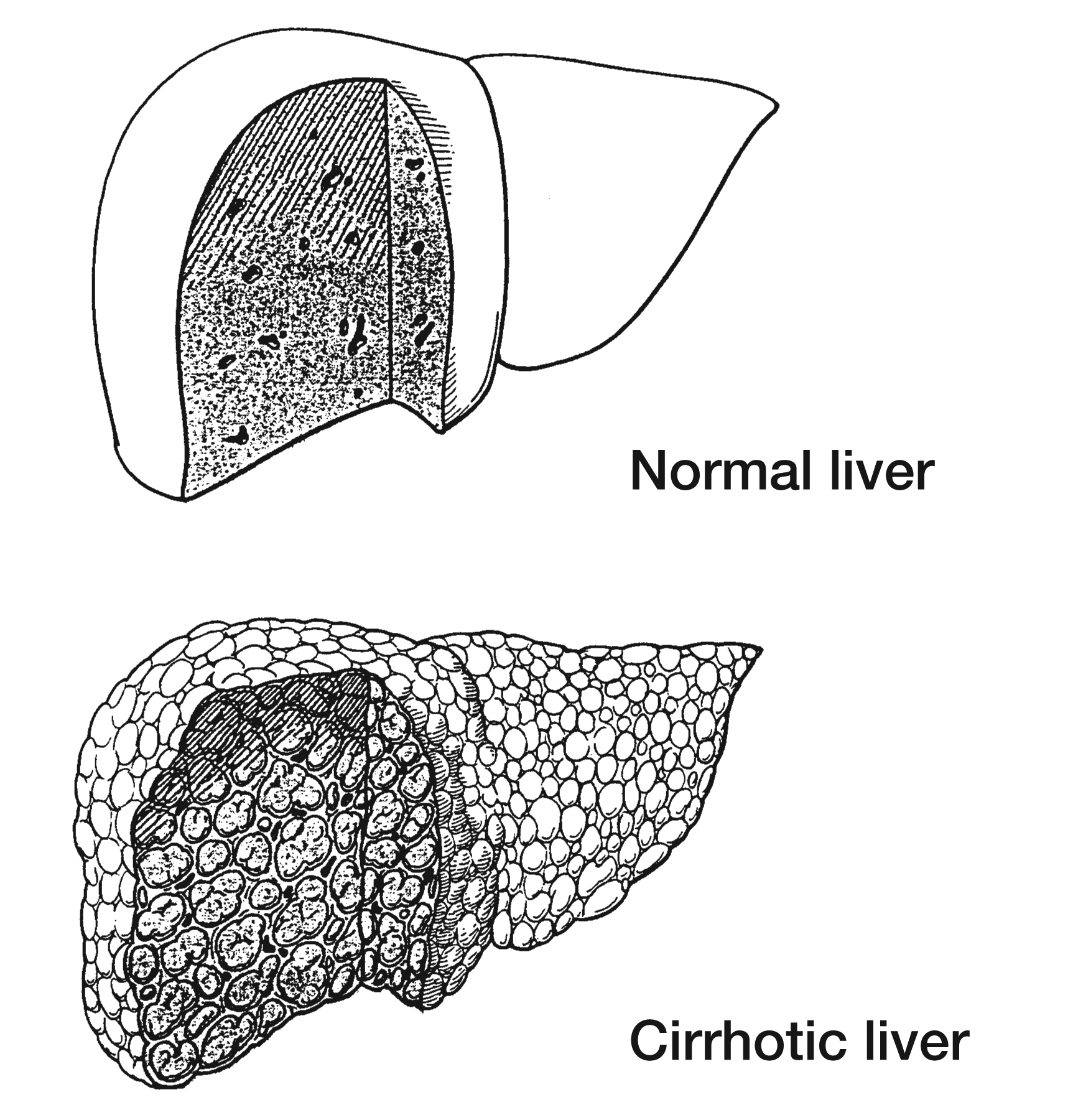
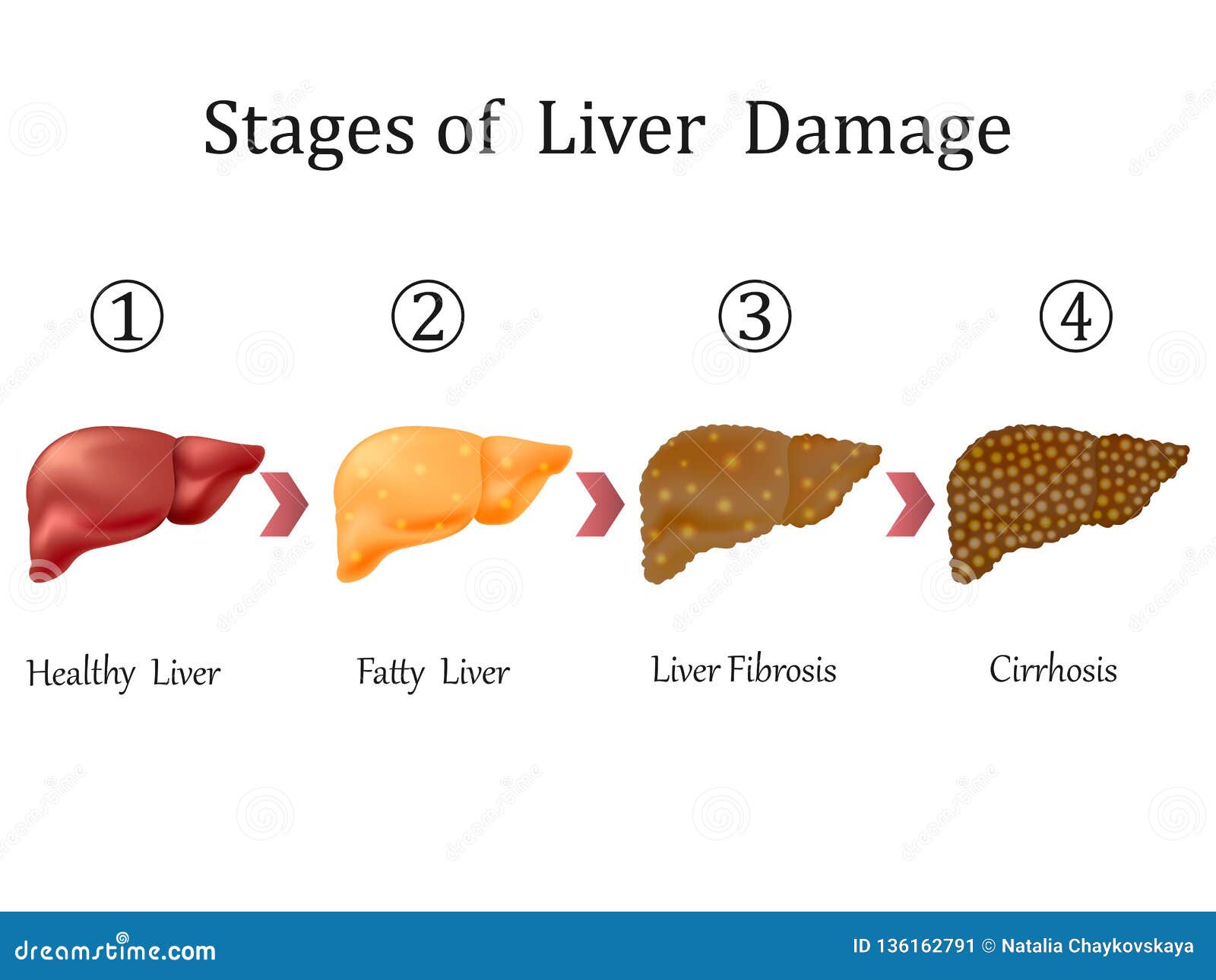 The treatment of this disease can be difficult, and the experiences and stress that arose during the illness can affect the patient’s emotional state. Feel free to contact a specialist.
The treatment of this disease can be difficult, and the experiences and stress that arose during the illness can affect the patient’s emotional state. Feel free to contact a specialist. After the course of treatment, it is desirable to lead a healthy lifestyle, preventing new damage and complications of the disease.
After the course of treatment, it is desirable to lead a healthy lifestyle, preventing new damage and complications of the disease. However, with timely access to a doctor and compliance with certain rules, it is possible to slow down the progression of the disease and minimize its negative consequences. In some cases, liver transplantation may be recommended, which can improve quality of life and prolong life.
However, with timely access to a doctor and compliance with certain rules, it is possible to slow down the progression of the disease and minimize its negative consequences. In some cases, liver transplantation may be recommended, which can improve quality of life and prolong life. Reverse development of cirrhosis is possible!!!.
Reverse development of cirrhosis is possible!!!. Antiviral drugs have antifibrotic and anticirrhotic effects. Prescribing antiviral therapy in such cases is a serious and responsible decision for a doctor, since treatment with these drugs is often accompanied by side effects with quite dangerous blood changes. However, there are NO other ways to survive.
Antiviral drugs have antifibrotic and anticirrhotic effects. Prescribing antiviral therapy in such cases is a serious and responsible decision for a doctor, since treatment with these drugs is often accompanied by side effects with quite dangerous blood changes. However, there are NO other ways to survive.